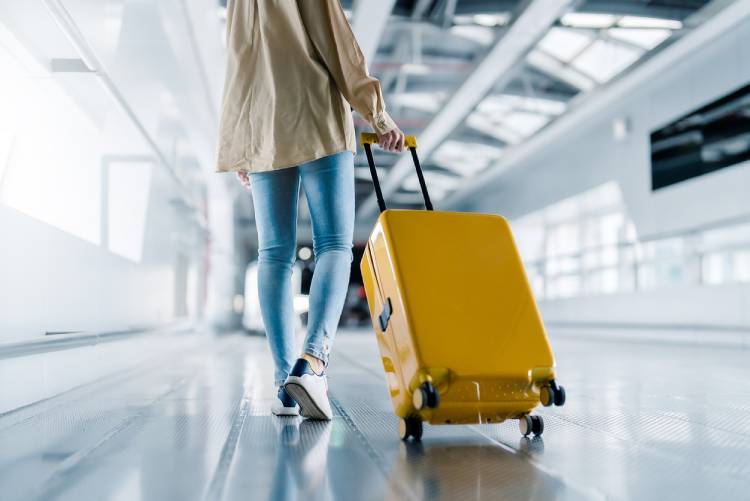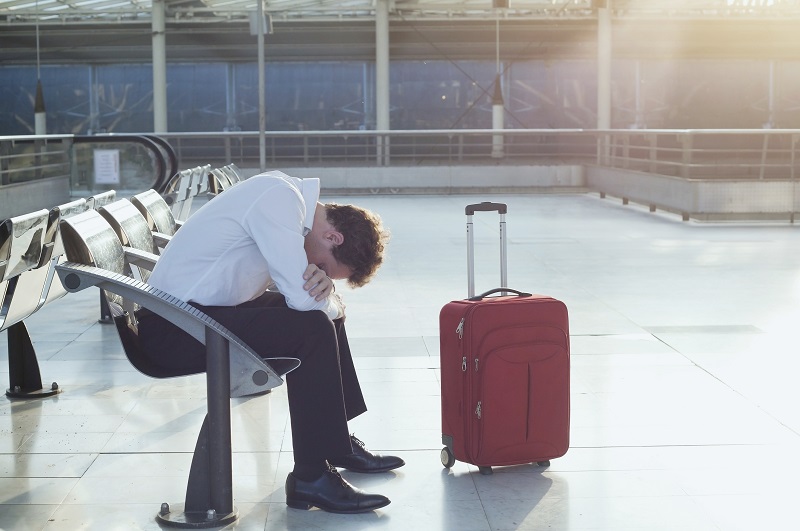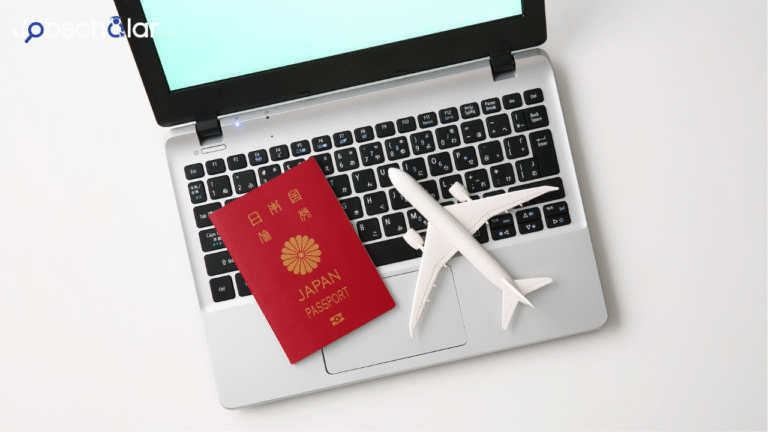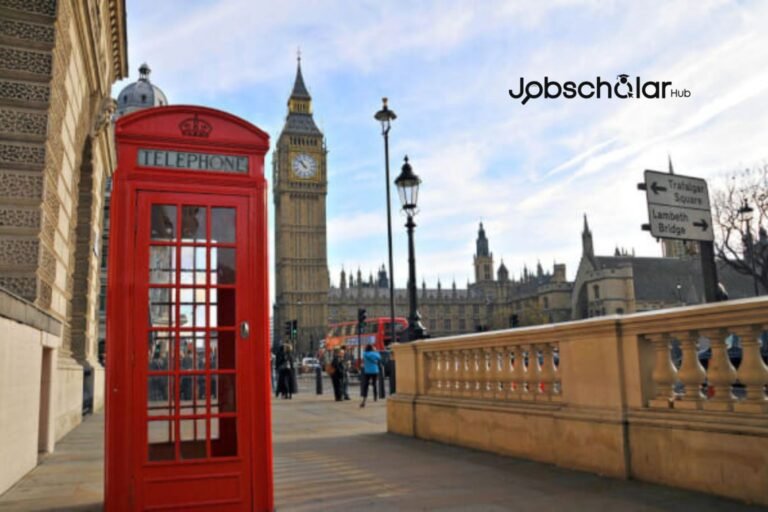Are you considering the SB1 returning resident Visa? Then this guide is exactly what you need. We will take you through the qualification, step-by-step process for application, reasons why they are usually denied, and how to absolutely avoid them. Let’s get right into it!
Table of contents
- What is the SB1 Visa?
- Who Qualifies for an SB1 Visa?
- How to Apply for an SB1 Visa — The Step-by-Step Process
- Step 1: Check if You Are Eligible
- Step 2: Book an Appointment at the U.S. Embassy or Consulate
- Step 3: Fill out Form DS-117 (Application to Determine Returning Resident Status)
- Step 4: Collect Supporting Documentation
- Step 5: Go to the interview at the U.S. embassy
- Step 6: Pay the Required Fees
- Step 7: Complete a Medical Exam
- Step 8: Wait for the Decision
- Step 9: Re-Enter the U.S.
- SB1 Visa Denials- Reasons and How to Avoid Them
- Life After Approval — What Happens After You Reclaim Your Residency?
- FAQs
- Conclusion
- References
- Recommendations
What is the SB1 Visa?

The SB1 Visa is a Returning Resident Visa, basically used by any lawful permanent residents (LPRs) or green card holder but need to stay outside the US for a longer period, exceeding one year or beyond its re-entry permit. Generally, being outside the United States for too long can make you lose your green card, but the SB1 Visa allows you to regain your residency if you have proof your lengthy absence was out of your control.
Think of it as hitting “undo” on losing your residency — only with paperwork. Whether it was through unforeseen sickness, family emergencies, or travel restrictions, the SB1 Visa presents an opportunity for you to return to the U.S. without having to start the entire immigration process all over again. But approval isn’t guaranteed — you must show that, when you left the U.S, you intended to live permanently in the U.S.
Read also: Netherlands Work Visa Requirements 2025
Who Qualifies for an SB1 Visa?

Not everyone who overstays outside of the U.S. can just waltz back in on an SB1 Visa — that is specifically for lawful permanent residents (LPRs) or conditional permanent residents (CPRs) who accidentally stayed outside of the U.S. for more than one year or beyond the time a re-entry permit was valid. You’ll need to meet a number of key requirements to be eligible. Let’s break them down:
You Must Have Been Lawful Permanent Resident (LPR)
The SB1 visa is limited to an individual who once held a valid green card. It does not matter if your legal residency was as an LPR (you had a 10-year green card) or a CPR (you had a 2-year conditional green card), you must demonstrate that you were an LPR or CPR and that you had legal residency at the time you would have departed the U.S. prior to any period of prolonged absence.
Read also: How To Get Best USA Jobs With Visa Sponsorship
You Must Have Departed the U.S. with the Intent to Return
When it comes to SB1 Visa, intent is enormous. At the time you left the U.S., you should have unequivocally intent to return and live permanently. That doesn’t mean tricky schemes to go abroad for an indefinite period — the U.S. government wants to know that your departure was temporary in nature.
Examples of intent could be:
- Proof of a U.S. address (lease/mortgage documents)
- U.S. ties — bank bills or utility receipts
- Family relationships (spouse, children or other close relatives living in the U.S.)
Read also: Family-Based Immigration in the U.S- Sponsorship & Visa
You Were Unavoidably Delayed
This is where it gets tricky. “It slipped my mind” is just not going to do. You have to show that exceptional circumstances prevented you from coming back. Examples include:
- Medical Emergencies: You or a close family member were seriously ill or hospitalized.
- Travel Restrictions: Lockdowns, canceled flights or closing borders because of the pandemic.
- Legal Issues: Unexpected legal issues or threats to personal safety.
You need to demonstrate that these events were unavoidable and not a consequence of bad planning.
You Still Need to Be Eligible for Permanent Residency in the U.S.
If you’ve engaged in any conduct that makes you ineligible for a green card, even if you check all of the boxes above, you won’t qualify. If you’d committed certain crimes, flouted immigration laws or renounced your U.S. residency voluntarily, you’re out of luck.
The U.S. government wants to make sure you’re still a law-abiding, admissible resident before allowing you to reclaim your spot.
Read also: UK Skilled Worker Visa | How to Apply in 2025
You Have to Apply While You Are Still Outside the U.S.
One key thing to note is that you cannot apply for an SB1 Visa once you have returned to the U.S. You would need to initiate the application process through your nearest U.S. consulate or embassy before trying to re-enter the country. And if you attempt to fly back without it, you will probably be sent back at the border.
In order to obtain an SB1 Visa, you need to show that you had departed the U.S. with an intention to return, but something beyond your control prevented your return. If you can demonstrate strong ties to the U.S. and prove that your residency was never really “abandoned,” the SB1 Visa provides you a second opportunity to begin where you left off.
Check out: How to Settle in Australia After Migration: Live the Aussie Dream
How to Apply for an SB1 Visa — The Step-by-Step Process

The process of applying for an SB1 Visa, officially known as the Returning Resident Visa, can be challenging. But if you know the steps to take and the information needed, it in many cases can be quite simple. So, here is a step-by-step guide for how to apply for an SB1 visa successfully.
Step 1: Check if You Are Eligible
Before opening the paperwork scroll, the first thing you have to do is check whether you are eligible for the SB1 Visa or not. Not all who’ve left the country for too long will be eligible.
The primary requirements are:
Intent to Return: When you left the U.S., you must have fully intended to return. Evidence of your life remaining in the U.S. — for example, property ownership, family ties or active employment — can be vital.
Long Absence Outside of Your Control: Your extended time abroad must be only because of circumstances outside your control. This could include:
- Medical emergencies will also include hospitalization or disability.
- Travel restrictions Flight cancellations or travel bans.
- Family Emergencies: Death or serious illness of a family member.
You probably won’t meet the criteria if you voluntarily remained outside the United States or moved abroad for good.
You should also read: Finland Work Visa Guide 2025: Requirements, Application, and Tips
Step 2: Book an Appointment at the U.S. Embassy or Consulate
Once you know you’re eligible, the next step is to schedule an appointment with the closest U.S. embassy or consulate in the country where you are now located. Note that some consulates have a wait time so be sure to book as early as you can. Find the appropriate contact information from its official website.
Follow the instructions to book your appointment. Be sure to verify any extra requirements specific to your location.
Step 3: Fill out Form DS-117 (Application to Determine Returning Resident Status)
The application form is Form DS-117, the SB1 Visa application. (The form is important because it aids the consular officer in determining if you qualify as a returning resident.) You are required to fill in the subsequent details:
- Your Travel History: When you departed the U.S. and where.
- Circumstances beyond your control that prevented your return
- Evidence of Your Continued Connections In the U.S.: Indications that you planned to return.
- Complete the forms accurately and truthfully. Any discrepancies can lead to denial.
Check out: Best UK Jobs With Visa Sponsorship
Step 4: Collect Supporting Documentation
Supporting documents help a lot in strengthening your application. Since the SB1 Visa is not automatically given, you want strong evidence to substantiate your statements. Now here’s a list of the important documents that you can prepare:
- Proof of Intent to Return
- U.S. based property ownership or lease agreements.
- You will be working or have an offer of a job.
- Family connections (a spouse or children) in the U.S.
- Documentation of Things Out of Your Control:
- Hospital bills, doctor’s notes, medical records.
- Travel restrictions, flight cancellation notices
- Death certificates or other documents related to emergencies.
- Evidence of Ties to the U.S.
- U.S. tax returns.
- Letters, bank statements and utility bills.
- Affiliations in U.S.-based organizations.
Arrange these papers properly, even deck up with multiple copies in case of demand.
Step 5: Go to the interview at the U.S. embassy
On the day of your interview, make sure you show up prepared at the U.S. embassy or consulate. Again, the consular officer will determine if you actually are eligible for the SB1 Visa.
What Are Some Common Questions You Might Be Asked:
- Why did you leave the U.S.?
- Why couldn’t you go back on time?
- What did you do to try to come back sooner?
- What documents do you have to demonstrate you had ties to the U.S.?
Just remember to be very confident while answering and answer honestly. The officer might also request further documentation, so come prepared with your documents.
Are you wondering what questions you should expect, read this: Visa Interview Questions You MUST Prepare For — And How to Nail Every Answer!
Read also: Employment-Based Green Cards in the U.S: Eligibility & Application
Step 6: Pay the Required Fees
There are several fees associated with applying for an SB1 Visa. While these will vary from country to consulate, they typically include:
- Application Fee (Form DS-117): About $180 (subject to change)
- Medical Examination Fee: Varies based on country and physician.
- Once Approved Visa Application Fee: Approx $205
Be sure to retain any receipts and proof of payment; they may be needed during the process.
Step 7: Complete a Medical Exam
As with most immigrant visas, the SB1 Visa process involves a medical examination, which must be performed by an approved panel physician. The tests often consist of:
- Vaccination Review – review on the vaccination you may need to be up to date.
- General Health Check: Physical examination, screening for communicable diseases or other diseases.
Costs and availability with panel physicians can vary, so be sure to book early to avoid delays in the processing of your application.
Read also: Temporary Protected Status (TPS) in the U.S Countries Designated and Application Procedures
Step 8: Wait for the Decision
After the interview, and the medical examination, you may have to wait for a final decision to be made. The processing time can vary between weeks and month. Once approved, you will receive an SB1 Visa stamp in your passport that will allow you to re-enter the U.S.
If they deny you, the consulate will explain the reasons for the decision. Depending on the reason, you might have options to appeal or to reapply.
Step 9: Re-Enter the U.S.
Now that you have your SB1 Visa, you will want to return to the United States. At a port of entry, a U.S. Customs and Border Protection (CBP) officer may ask further questions to verify your eligibility.
Know the location of your passport, visa, and supporting documents. Feel free to answer any follow-up questions, confidently. Once admitted, your lawful permanent resident status will be reinstated.
Check out: Temporary Protected Status (TPS) in the U.S Countries Designated and Application Procedures
SB1 Visa Denials- Reasons and How to Avoid Them

Applying for an SB1 Visa is not a walk in the park — countless applications get denied. Why? It generally gets down to one thing: no evidence. The U.S. government wants to believe that you always planned to settle in the U.S. If they get a whiff that you’re attempting to reclaim residency strictly out of convenience, it’s over.
Below are the most common reasons for denials, and how to avoid them:
Weak Evidence of Intent to Return:
If you departed the U.S. without keeping significant ties (a residence, a job, family), it’s as if you never intended to return.
Simply maintain records of ownership or lease documents regarding the property or continuing indebtedness in the United States. Asserting you weren’t allowed to return isn’t enough — you require evidence. Sick days, travel bans or family emergencies need to be documented. Also gather hospital records, doctors’ notes, flight cancellations or other verified records.
Staying Longer Than the Visa Allows (Without a Re-entry Permit):
Green card holders can get a re-entry permit before they leave, if they know they’re going to be away for a long stretch. Missing one can leave your case on shaky ground. If you’ll be gone for a long time in the future, secure a re-entry permit.
Not showing up for the consular interview:
Failing to attend your consular interview or giving contraindicating answers is a guaranteed way to get denied. Try to come ready with all relevant documents and be honest and consistent.
Failure to Demonstrate Strong U.S. Connections:
If you seem more settled abroad than in the U.S., they may believe you have moved on. Try to provide evidence of ongoing financial commitments, community ties, or attempts to return sooner.
Read also: Bringing Your Family Members to Australia: Family Migration
Life After Approval — What Happens After You Reclaim Your Residency?
Congrats! So you’ve jumped through all the hoops, and your SB1 Visa has been approved — but what comes next? It’s basically hitting your green card status reset button. When you return to the U.S., you become a lawful permanent resident, but there are items you should keep in mind:
Check Your Green Card Status:
If your green card was expired or lost, you might have to renew or replace the green card after reentry.
Reestablish U.S. Residency:
Now is the time to clarify that you’re here to stay. That includes reopening bank accounts, changing your driver’s license or finding a new job.
Avoid Future Issues:
You don’t want to gamble again after this close call on losing residency. If you are required to be away for a long time in the future, make plans to apply for a re-entry permit or for citizenship, as applicable.
Monitor Your Travel Habits:
U.S. immigration watches for trends. Frequent long leaves could raise red flags, even after getting approval.
See also: How to Successfully Apply for a Special Immigrant Visa (SIV) to the United States
FAQs
SB1 Visa enables such foreign nationals to return to the U.S. as lawful permanent residents after staying out for more than one year.
You would have to be a lawful permanent resident and prove that your prolonged absence was beyond your control.
Among other documents are proof of U.S. permanent residency, travel history and evidence of the reasons for the lengthy stay abroad.
The only exception: If you didn’t formally abandon your green card and can prove you intended to return home, you might still qualify for SB1.
Processing time may vary but can take several months depending on the workload at the consulate and the complexity of your case.
Conclusion
Obtaining an SB1 Returning Resident Visa is a complicated process with no guarantees, but with sufficient preparation, you can increase your chances of success. Showing that your long absence was not of your choosing, and that you have sufficiently maintained your ties to the U.S., will improve your chances of regaining your residency.
References
- USEmbassy.gov– SB1 returning resident Visa- Wizard Results
- Immigration Advice Service- SB1 returning resident Visa Requirement, Cost, Timeframe, Process
- ATTLaw.com- A Guide on SB1 Resident Returning Visa






